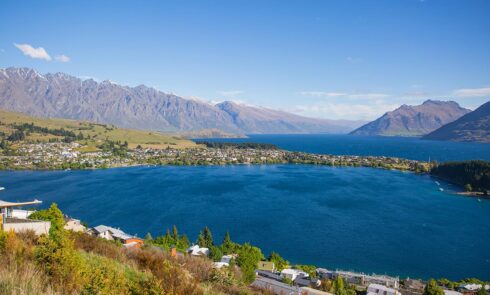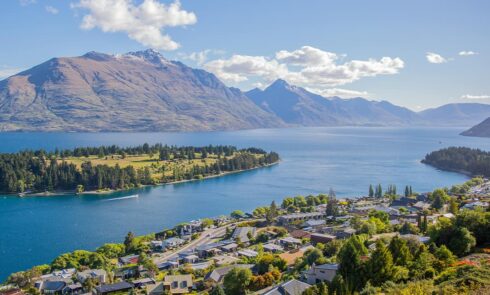There’s something profoundly humbling about standing beneath a kauri tree. Its trunk rises straight and silent, its bark worn smooth by centuries of wind and rain, its roots stretching deep into the damp earth of Aotearoa’s west coast. For those of us who work in conservation and cultural heritage, these giants are not just trees – they are living ancestors, witnesses to time.
The New Zealand kauri trees are among the oldest and largest trees on the planet, some over 2,000 years old. Their presence defines not just the landscape but also the soul of the region. From the West Coast kauri forest NZ to the northern reaches of Waipoua, they embody both ecological significance and spiritual depth.
The Ancient Heartbeat of Aotearoa’s Forests
Long before tourism or scientific study, kauri trees were revered by Māori as sacred beings. In kauri tree culture Māori, the kauri was seen as a link between the heavens and the earth – its towering form reaching skyward, its roots binding the soil and water below.
A Tree with a Spirit
In Māori mythology, kauri tree myths Māori tell of Tāne Mahuta, the god of forests, who separated earth and sky to let light into the world. The largest living kauri, also named Tāne Mahuta, still stands in Waipoua Forest, a living embodiment of that story. To walk beneath it is to step into a temple, where each leaf seems to whisper fragments of ancient prayer.
The kauri forests ecosystem NZ is equally remarkable. These forests once covered vast areas of the North Island and parts of the west coast. Today, their remnants provide crucial habitats for birds, insects, and fungi, many of which exist nowhere else on Earth. The kauri trees biodiversity NZ remains one of the most complex and fragile ecosystems in the Southern Hemisphere.
Guardians of Balance
Kauri trees play a vital role in maintaining forest structure. Their canopies control light, moisture, and soil temperature, shaping the lives of everything below. When I first studied kauri forest research NZ, I was struck by how interdependent these systems are – remove one piece, and the balance begins to falter.
Sadly, human history hasn’t always been kind to them. Logging during the 19th and early 20th centuries decimated vast tracts of kauri tree heritage NZ, leaving only small pockets of old-growth forest behind. The majestic trees that once dominated the skyline were cut down for ships, homes, and furniture, their remains scattered across a young, growing nation.
Conservation and the Fight Against Kauri Dieback
In recent decades, a new enemy has emerged: kauri dieback NZ, a soil-borne disease caused by a microscopic pathogen. It attacks the roots, cutting off the tree’s ability to absorb water and nutrients. The slow decline that follows can take years, but it’s always fatal.
As someone who’s spent countless hours hiking through these forests, the sight of a dying kauri is heart-wrenching. The bark darkens, the crown thins, and the forest falls silent. The disease spreads silently through contaminated soil – even a single footprint can carry it.
To combat this, the kauri tree conservation New Zealand movement has become one of the country’s most passionate and unifying environmental causes. Local iwi (tribes), scientists, and volunteers work side by side in kawa kauri forest conservation projects. Tracks are closed, cleaning stations installed, and visitors are educated on how to protect the trees they’ve come to admire.
Here are a few key conservation actions that define this effort:
- Cleaning footwear before entering and leaving kauri zones to stop soil contamination.
- Building raised walkways that prevent direct soil contact with roots.
- Encouraging responsible tourism through awareness programs and local guides.
- Supporting regeneration projects through donations and community planting events.
Regeneration and Renewal
Despite the challenges, there’s hope. Across New Zealand, kauri forest regeneration NZ programs are showing promising results. Seedlings are being planted in disease-free zones, and scientists are experimenting with genetic resistance. The idea isn’t just to preserve what’s left – it’s to rebuild.
One of my most inspiring experiences came while visiting a community-led nursery near the Kawhia Harbour. There, elders and students worked side by side, nurturing tiny saplings destined for the hills above. It was more than environmental work – it was an act of cultural revival.
The Cultural Soul: Craft, Story, and Spiritual Connection

To understand the kauri fully, you have to move beyond science and step into the realm of tradition. The Māori relationship with kauri is not one of exploitation, but of partnership – taking only what is needed and giving thanks in return.
Kauri as Art and Ancestry
For centuries, Māori carvers have transformed kauri into kauri trees crafts Māori woodwork – from waka (canoes) to intricate meeting house panels. Each piece carries not just beauty but genealogy; every carving tells a story of lineage, place, and purpose.
In workshops across the country, artisans continue the practice of kauri wood craft NZ with deep reverence. I once spoke to a carver in Northland who described his process as “talking to the wood.” He said the grain tells him what to carve and what to leave untouched. That philosophy perfectly captures the Māori respect for living materials.
These crafts are often made from fallen or reclaimed wood, reflecting a commitment to sustainability and respect for nature. In fact, kauri forest craft and timber NZ industries now focus almost exclusively on using salvaged timber, a move that protects the remaining giants while keeping the art alive.
The Kauri Forest Experience
For travelers, walking through a kauri forest is not merely sightseeing – it’s a pilgrimage. Kauri forest walks NZ on the west coast, particularly in areas like Waipoua and Puketi, offer visitors the chance to witness these ancient trees up close while learning about their ecological and spiritual significance.
Here’s what makes these experiences special:
- Guided walks led by Māori guardians who share stories of ancestry and connection.
- Interpretive trails explaining kauri forest sustainable tourism practices.
- Opportunities to contribute to local conservation funds or plant new seedlings.
- The feeling of standing among giant kauri trees NZ, where silence itself feels sacred.
These walks are an example of how kauri forest tourism NZ can coexist with preservation. The balance is delicate, too many visitors can threaten the roots, but responsible tourism, led by local communities, can fund conservation while spreading awareness.
Science Meets Spirit: The Future of Kauri
Looking ahead, the future of West Coast kauri forest NZ ecosystems depends on how well we can blend ancient wisdom with modern science. It’s not enough to study the trees; we must also listen to the stories they’ve inspired for generations.
Researchers in kauri forest research NZ are now combining traditional Māori ecological knowledge (mātauranga Māori) with cutting-edge techniques such as drone mapping and genetic analysis. This collaboration represents a new model for conservation – one rooted in both data and respect.
The best kauri forests New Zealand still have the power to teach us resilience. They’ve endured volcanic eruptions, storms, and centuries of human interference. Yet, they continue to stand – guardians of biodiversity, culture, and craft.
It’s impossible to spend time among them without feeling a shift. The air is thick with life, the ground soft with fallen needles, and the light filters through leaves older than human memory. You begin to understand why kauri tree heritage NZ is so deeply woven into the identity of Aotearoa.
The kauri’s story is not just about preservation – it’s about reconnection. Whether you’re a scientist, an artist, or a traveler seeking meaning, the forests remind us of something profound: we are part of a living continuum. To protect the kauri is to protect ourselves – our stories, our planet, our future.


